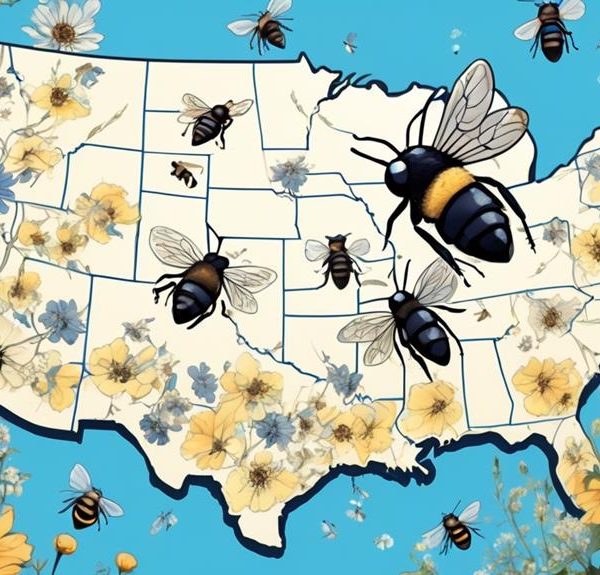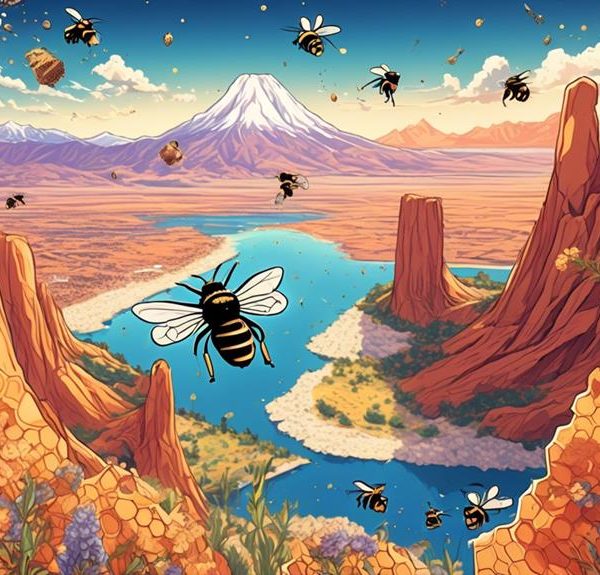Hop into the world of pollinators as we uncover the mystery of Mason bees' origin in Oregon.
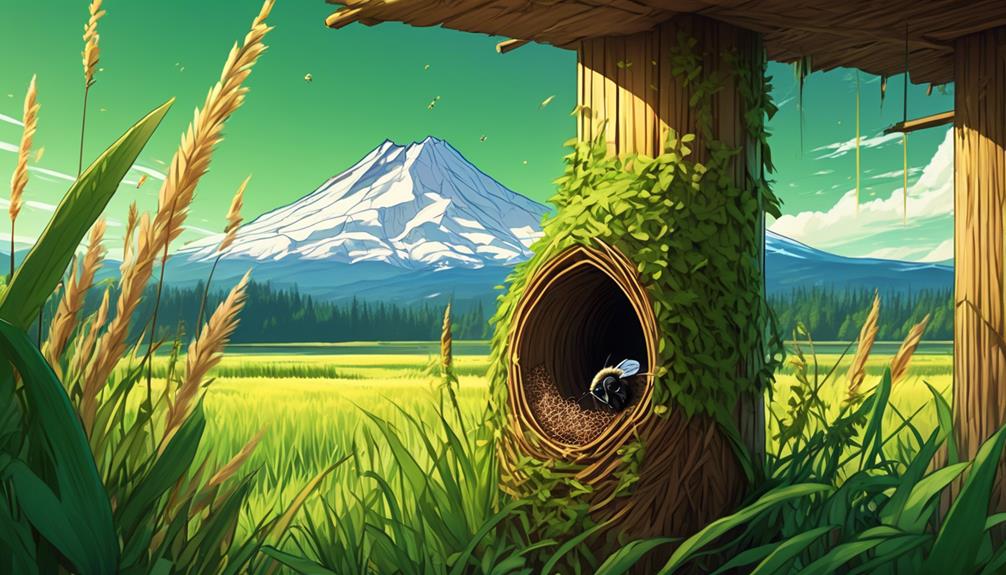
Are Mason Bees Native to Oregon?
Did you know that there are over 200 species of bees native to Oregon, but not all are as well known or as beneficial as the Mason bee?
As an enthusiast in the world of pollinators, you've probably heard of the significant role that Mason bees play in the environment. You might be wondering if these industrious, non-aggressive bees are native to Oregon.
Well, it's a fascinating subject, touching on aspects of biology, ecology, and even agriculture. Stick around, and we'll explore this topic together, uncovering the truth about Mason bees in Oregon.
Key Takeaways
- Mason bees are native to Oregon and have been present in the region for centuries.
- They play a crucial role as primary pollinators in native ecosystems.
- Mason bees are adaptable and can thrive in various habitats, including forest edges, grasslands, gardens, suburban areas, and urban parks.
- Conservation efforts are necessary to protect and promote the well-being of Mason bees in Oregon, as they face threats from habitat loss and pesticide use.
Understanding Mason Bees
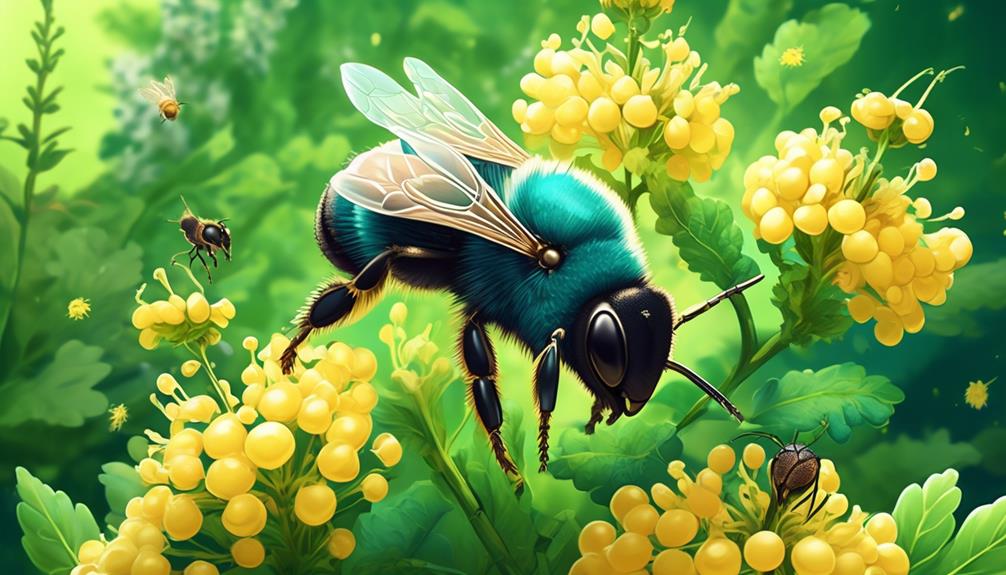
To fully appreciate the role of Mason bees in Oregon's ecosystem, it's crucial to delve into their unique behaviors, life cycles, and the symbiotic relationships they share with local flora.
You'll find these bees are solitary creatures, unlike their hive-dwelling counterparts. Each female is fertile, constructing her own nest in hollow stems or crevices, often recycling existing holes rather than causing any damage to structures.
In understanding their life cycle, note that Mason bees have one generation per year. Females lay their eggs in the nests, depositing pollen and nectar for the larvae to eat. After this, they seal off the chamber with mud, hence their name. By summer, the adult bees die off, leaving behind eggs that metamorphose into adults by fall, hibernating until spring to restart the cycle.
Analyzing their interactions with flora, you'll see that Mason bees are essential pollinators. Their hairy bodies pick up pollen easily, and since they're not hive-based, they contribute to cross-pollination as they flit from flower to flower. This behavior aids in the survival and propagation of local plant species, reinforcing the bees' critical role in Oregon's biodiversity.
Origin of Mason Bees
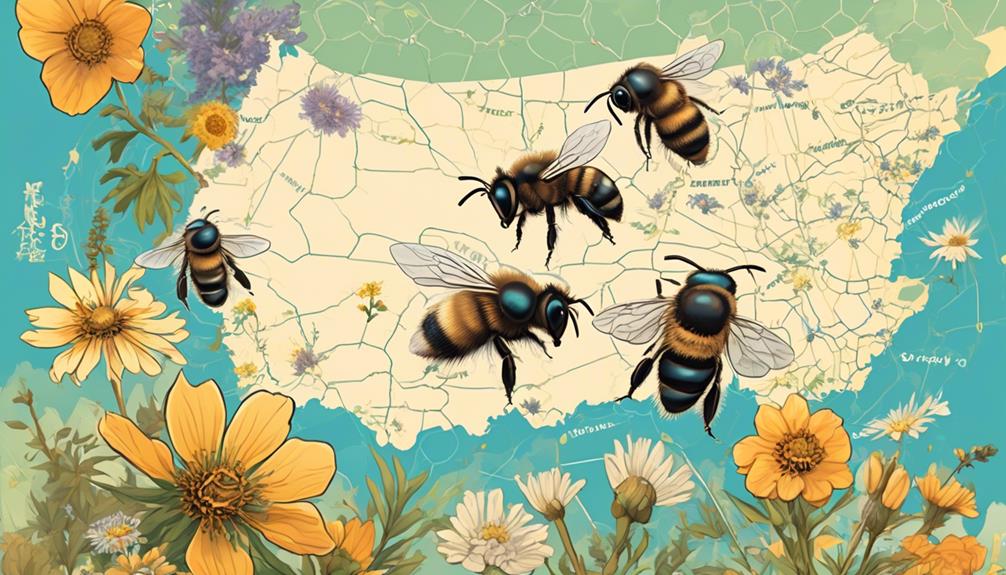
Now that you've got a grasp on their behaviors and ecological significance, let's trace back the roots of the Mason bees and explore where these industrious pollinators originated from. Mason bees are part of the family Megachilidae and have a diverse global distribution. They're native to regions of North America, Europe, Asia, and Northern Africa.
Mason bees have been present in Oregon for centuries, playing a crucial role in native ecosystems as primary pollinators. Their adaptability to various climates and habitats has enabled their broad distribution.
To emphasize, let's look at the table below:
Region | Native Mason Bee Species |
|---|---|
North America | 130 |
Europe | 68 |
Asia | 332 |
Northern Africa | 29 |
The numbers above show not just the diversity but also the adaptability of Mason bees. Their presence in different regions reflects their ecological versatility. In Oregon, they're a common sight in gardens, orchards, and wild habitats, attesting to their ability to thrive in varied environments. As you delve into the world of Mason bees, remember their journey from their origins to their current habitats is a testament to their resilience and ecological importance.
Mason Bees in Oregon
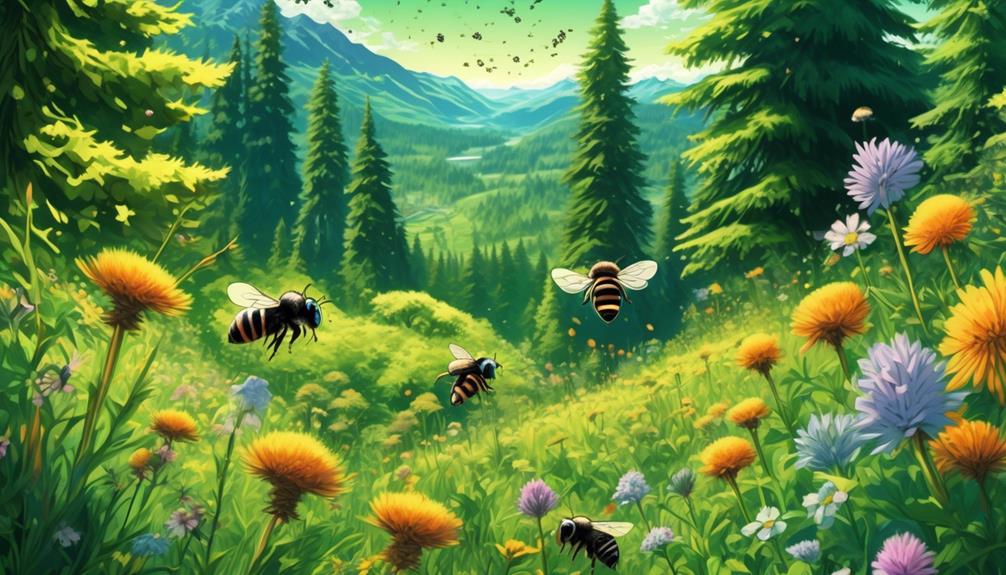
In the verdant landscapes of Oregon, you'll find over 500 species of bees, among which Mason bees hold a significant place as efficient and adaptable pollinators. Noted for their solitary nature, these bees don't live in large colonies like honeybees or bumblebees. Instead, they nest in small holes in wood or in the ground, making use of mud to construct their homes – hence their name.
As a resident of Oregon, you'll observe Mason bees actively pollinating from early spring to late summer. They're particularly fond of fruit trees and other early spring bloomers. Their efficient pollination is attributed to their fuzzy bodies that easily pick up pollen, and their tendency to visit various plants rather than sticking to one type, resulting in increased cross-pollination.
These traits make Mason bees invaluable to Oregon's ecosystems and agricultural sectors. However, they're facing threats from habitat loss and pesticide use. It's crucial to protect and encourage their populations. You can help by providing bee-friendly habitats in your garden, reducing pesticide use, and educating others about the importance of these industrious pollinators.
Habitat and Adaptation
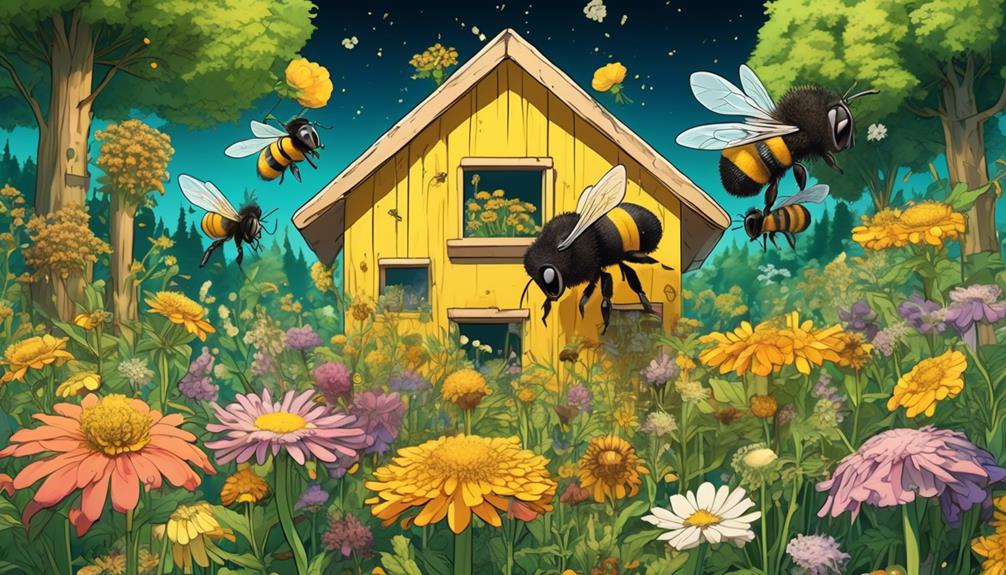
Mason bees' remarkable adaptability to diverse habitats, from verdant forests to suburban gardens, can largely be credited to their unique nesting habits and resilience. Unlike many bee species, they aren't hive dwellers. Instead, they nest in small crevices, often in wood or hollow stems.
This flexibility allows them to thrive in various environments. You'll find them in forest edges, grasslands, and even your backyard, provided they have access to flowering plants for nectar and pollen, and suitable nesting sites. They've also adapted to colder climates by having a unique overwintering lifecycle stage, prolonging their lifespan and increasing their survival rate.
Here is a glimpse of their habitat preference and adaptability:
Preferred Habitat | Nesting Material | Climate Adaptability |
|---|---|---|
Forest edges | Wood | Overwintering |
Grasslands | Hollow stems | Cold tolerance |
Gardens | Man-made tubes | Urban adaptability |
Suburban areas | Mud | Prolonged lifecycle |
Urban parks | Plant stems | Resourcefulness |
Understanding these adaptability factors can help you, if you're interested in hosting these beneficial pollinators in your garden or farm. Their resilience and adaptability make them an ideal species for encouraging biodiversity.
Importance of Mason Bees
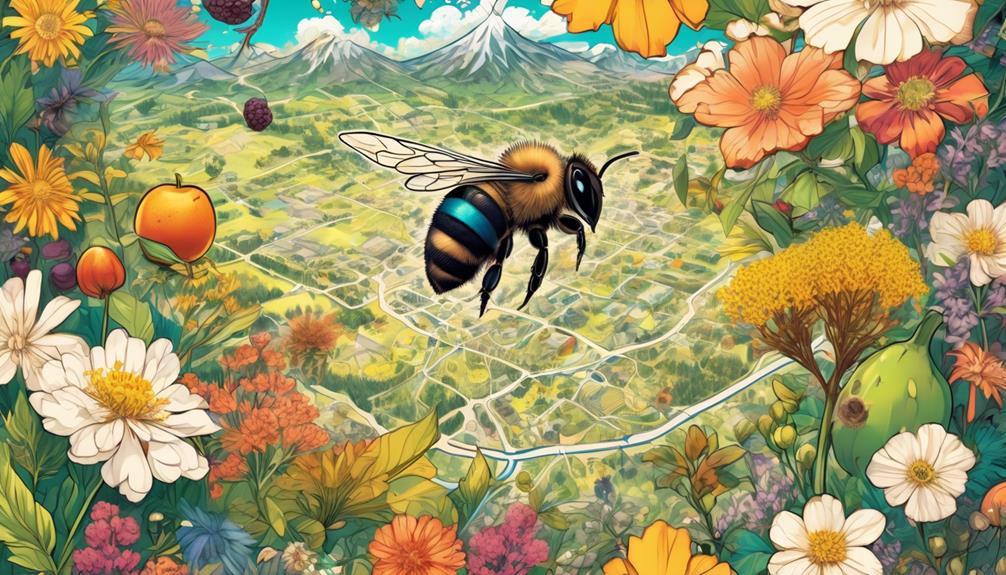
Having recognized their resilience and adaptability, you might wonder why these mason bees matter so much to our ecosystem. Their importance is multifaceted, primarily due to their superior pollination abilities.
Mason bees, unlike honey bees, are solitary creatures. They don't have a hive to protect and are therefore less aggressive. This characteristic allows them to focus more on collecting pollen, making them more efficient pollinators. It's estimated that it takes only 250 mason bees to pollinate an acre of apples, a task that would require 20,000 honey bees.
Moreover, mason bees are known as 'early risers'. They start their pollination activities earlier in the year than most other bees, ensuring that early-blooming plants are well-pollinated. They also have the ability to carry pollen on their abdomen, which increases the likelihood of cross-pollination.
In a biodiverse ecosystem, mason bees play a crucial role in maintaining the health and productivity of various plant species. They ensure the survival of plants which, in turn, provide food and shelter to other organisms. As such, mason bees are essential contributors to the sustainability and resilience of our ecosystem.
Conclusion
Yes, Mason bees are indeed native to Oregon. Their adaptation to the local habitat greatly contributes to their successful proliferation.
As pollinators, their role is crucial in maintaining the health and balance of Oregon's diverse ecosystems.
Their unique behaviors and characteristics provide important insights into the intricate workings of nature.
Protecting these native species isn't just beneficial, but necessary for the continued vitality of our environment.

